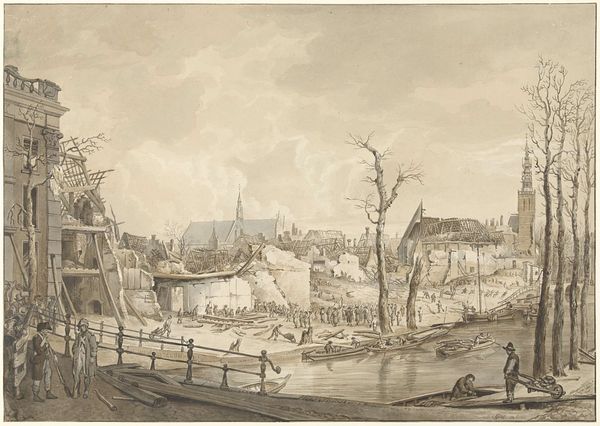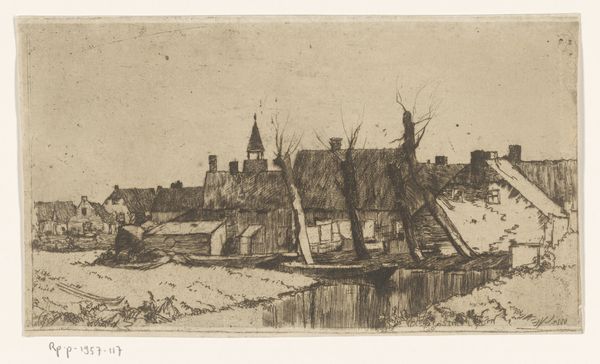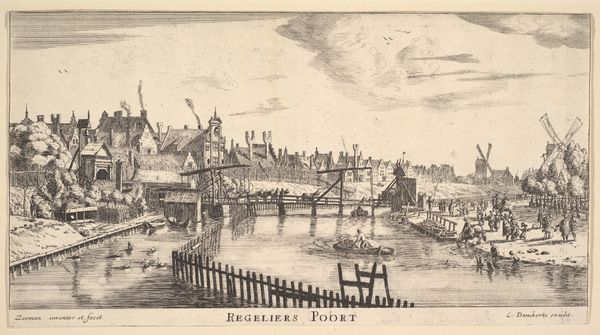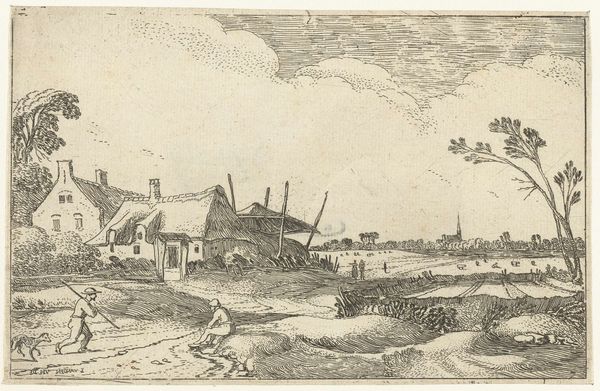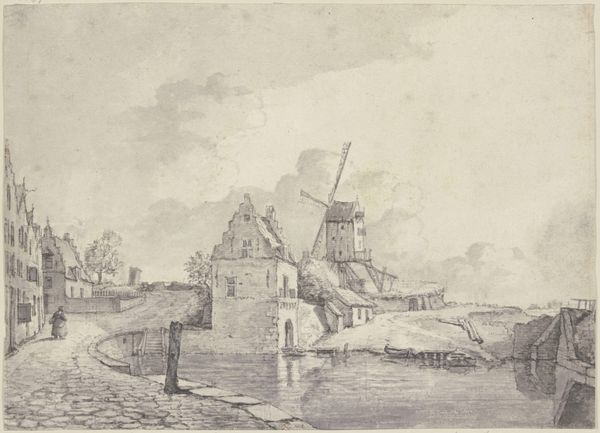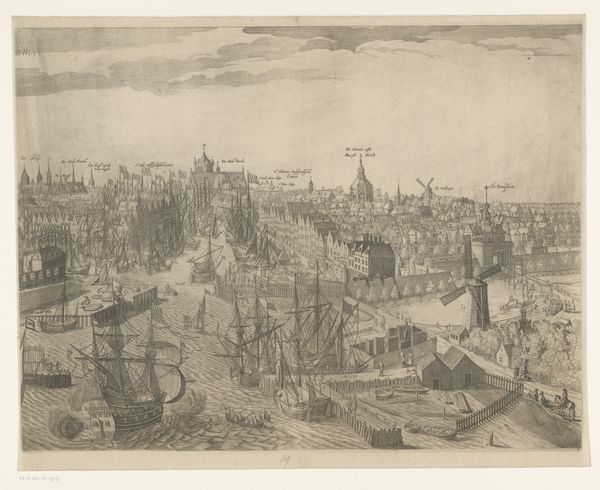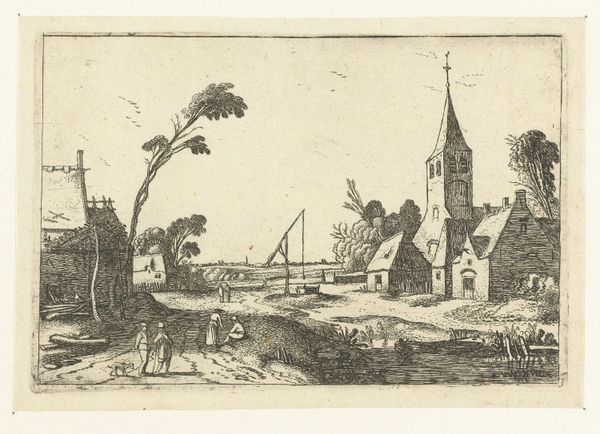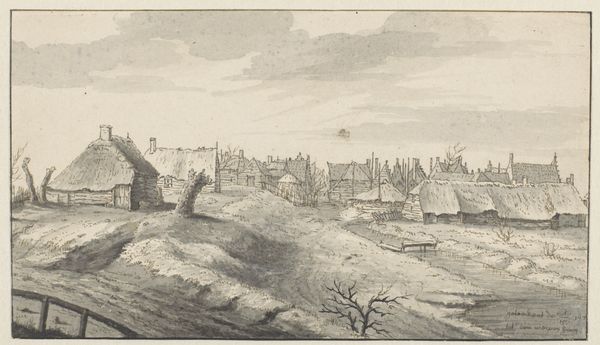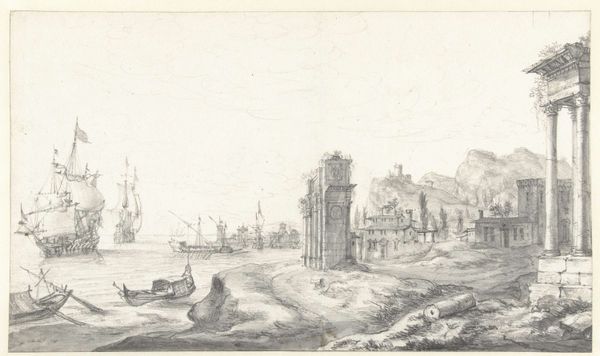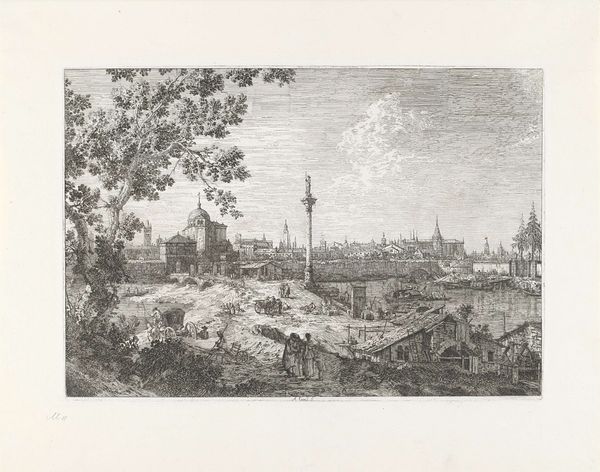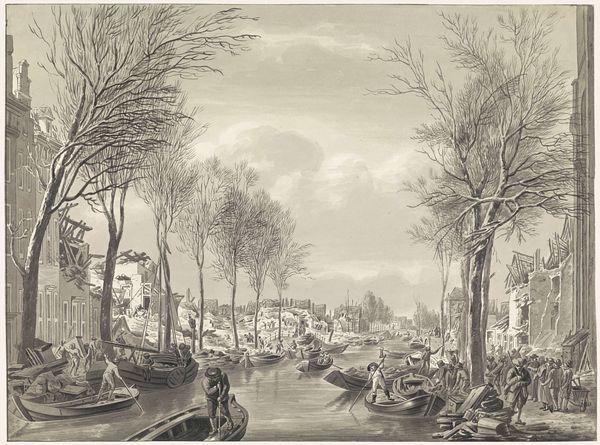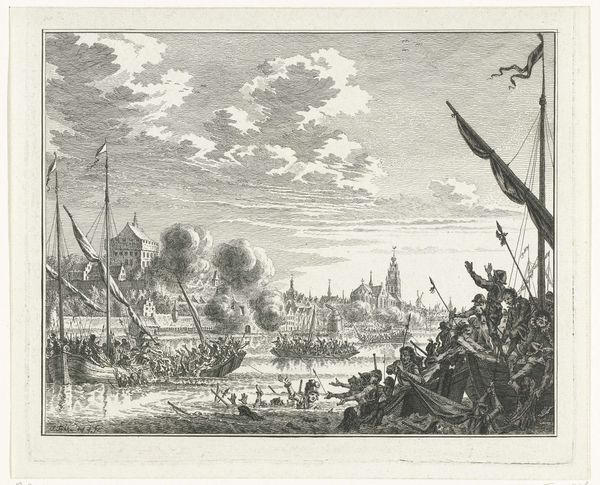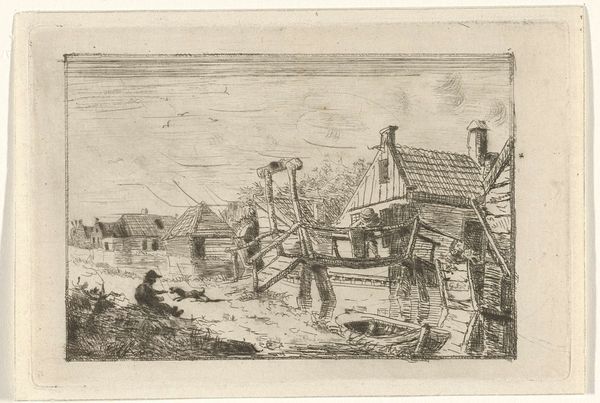
print, etching, engraving
# print
#
etching
#
landscape
#
romanticism
#
cityscape
#
history-painting
#
engraving
#
realism
Dimensions: height 453 mm, width 605 mm
Copyright: Rijks Museum: Open Domain
Curator: Here we have Ludwig Gottlieb Portman's 1807 print, "Het Rapenburg te Leiden na de ramp," now held in the Rijksmuseum's collection. The scene is rendered with both etching and engraving. Editor: What a bleak image! The monochromatic palette amplifies the sense of devastation, focusing our eyes on the jagged lines of broken structures and denuded trees. Curator: Portman meticulously details the aftermath of an explosion that decimated the Rapenburg canal district in Leiden. What interests me most is the tension he crafts between observable disaster and communal response. Look how the social fabric starts to be repaired already. Editor: Absolutely. This print functions as both historical record and social commentary. Notice the figures scattered throughout—some clearing debris, others simply observing. The visual emphasis here captures not only destruction, but also a society grappling with it. It really underscores human resilience, I think. Curator: It's a carefully constructed cityscape—ruins are offset by the stoicism of the surviving architecture. Even the seemingly random placement of figures becomes integral to the narrative. One begins to understand this wasn’t created for its pure aesthetic, but as commentary during this historical time. Editor: Considering the style, the landscape elements feel imbued with a distinctly Romantic sensibility – there is nature as both victim and witness to this trauma. And that subtle etching conveys more mood than any vibrant hue could. Curator: Indeed, beyond its representational accuracy, Portman also constructs an emotional space for viewers to contemplate disaster and community. Editor: A somber reminder, powerfully rendered. Curator: Agreed. This print prompts reflection on both past trauma and our capacity to recover from it.
Comments
No comments
Be the first to comment and join the conversation on the ultimate creative platform.
